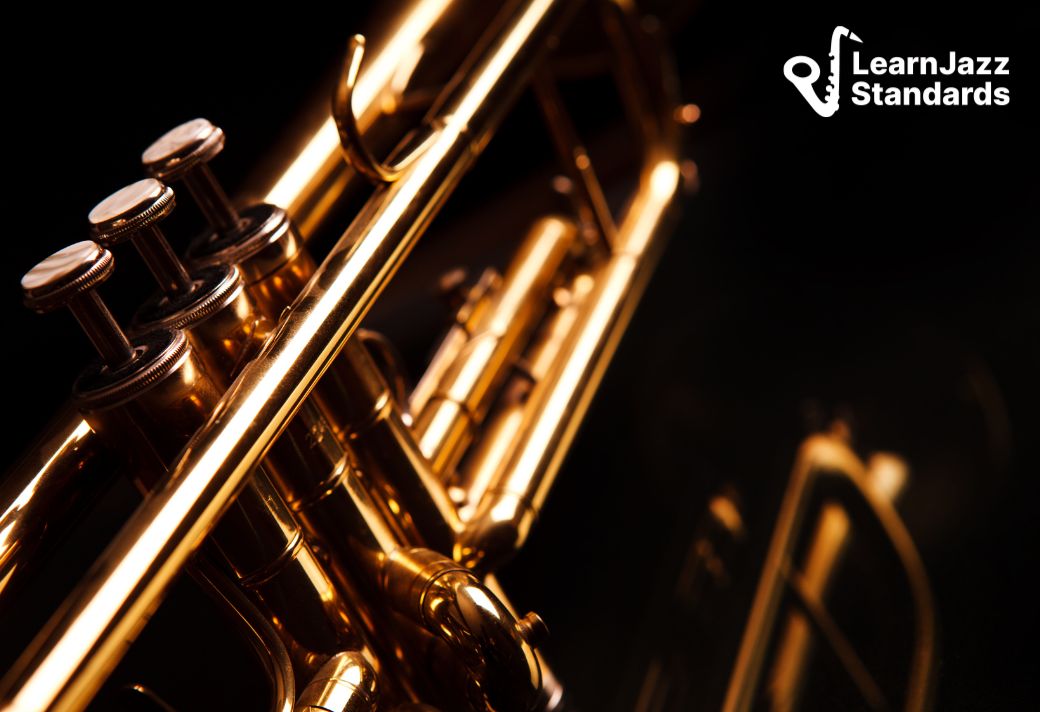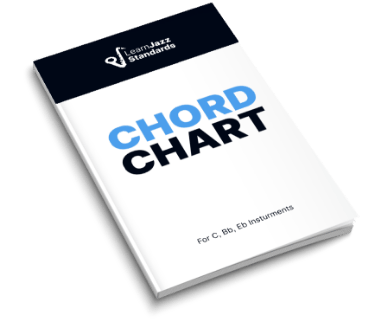The Locrian mode is one of the seven modes of the major scale. It has a unique sound that stands apart from other scales. This article will explore why and teach you how to play this scale in all 12 keys! We’ll explore it on guitar and piano and discuss how to use it in improvisation!
If you want to take your improvisational skills to the next level but don’t know how to get there, check out the Learn Jazz Standards Inner Circle.
We have everything you need to help you blast through playing plateaus and reach that next level.
Improve in 30 Days or Less. Join the Inner Circle.
Table of Contents
Modes of the Major Scale
Strap in for some music theory! Before we dig into the Locrian mode specifically, we must briefly review the diatonic modes and how they function.
Within the major scale, there are six other modes. All these modes share the same notes and note sequence, but we classify them as different scales. How and why do we do this in music theory?
Each note in the major scale can be the root note or starting point for a different scale. The note sequence remains the same, but the note you count as “one” changes. This creates six other scales with qualities different from the major scale’s qualities.
These are the seven diatonic modes:
- The Ionian Scale (major scale) is built from the first scale degree of the major scale; learn more about the major scale.
- The Dorian Scale is built from the second scale degree of the major scale; learn more about the Dorian scale.
- The Phrygian Scale is built from the third scale degree of the major scale; learn more about the Phrygian scale.
- The Lydian Scale is built from the fourth scale degree of the major scale; learn more about the Lydian scale.
- The Mixolydian Scale is built from the fifth scale degree of the major scale; learn more about the Mixolydian scale.
- The Aeolian Scale (natural minor scale) is built from the sixth scale degree of the major scale; learn more about the natural minor scale.
- The Locrian Scale is built from the seventh scale degree of the major scale.
See the note sequence of each major scale mode bolded below:
- Ionian: C → D → E → F → G → A → B → C → D → E → F → G → A → B → C
- Dorian: C → D → E → F → G → A → B → C → D → E → F → G → A → B → C
- Phrygian: C → D → E → F → G → A → B → C → D → E → F → G → A → B → C
- Lydian: C → D → E → F → G → A → B → C → D → E → F → G → A → B → C
- Mixolydian: C → D → E → F → G → A → B → C → D → E → F → G → A → B → C
- Aeolian: C → D → E → F → G → A → B → C → D → E → F → G → A → B → C
- Locrian: C → D → E → F → G → A → B → C → D → E → F → G → A → B → C
Each musical mode is related to a diatonic chord from the major diatonic series of 7th chords. All the modes have an associated seventh chord.

Triads and Seventh Chords Derived From the Major Scale
- I Chord (Tonic Chord):
- Major Triad
- Major 7th Chord
- ii Chord:
- Minor Triad
- Minor 7th Chord
- iii Chord
- Minor Triad
- Minor 7th Chord
- IV Chord:
- Major Triad
- Major 7th Chord
- V Chord:
- Major Triad
- Dominant 7th Chord
- vi Chord:
- Diminished Triad
- Minor 7th Chord
- viiø Chord:
- Diminished Triad
- Half-Diminished Chord
Let’s Talk About The Locrian Mode
The Locrian scale is built from the seventh scale degree of the major scale.
- C → D → E → F → G → A → B → C → D → E → F → G → A → B → C
Its scale formula can also be described as a sequence of whole and half steps. Below, we have (H) for half step and (W) for whole step.
- H-W-W-H-W-W-W

Its related triad is the diminished triad, and its seventh chord is the half-diminished chord:
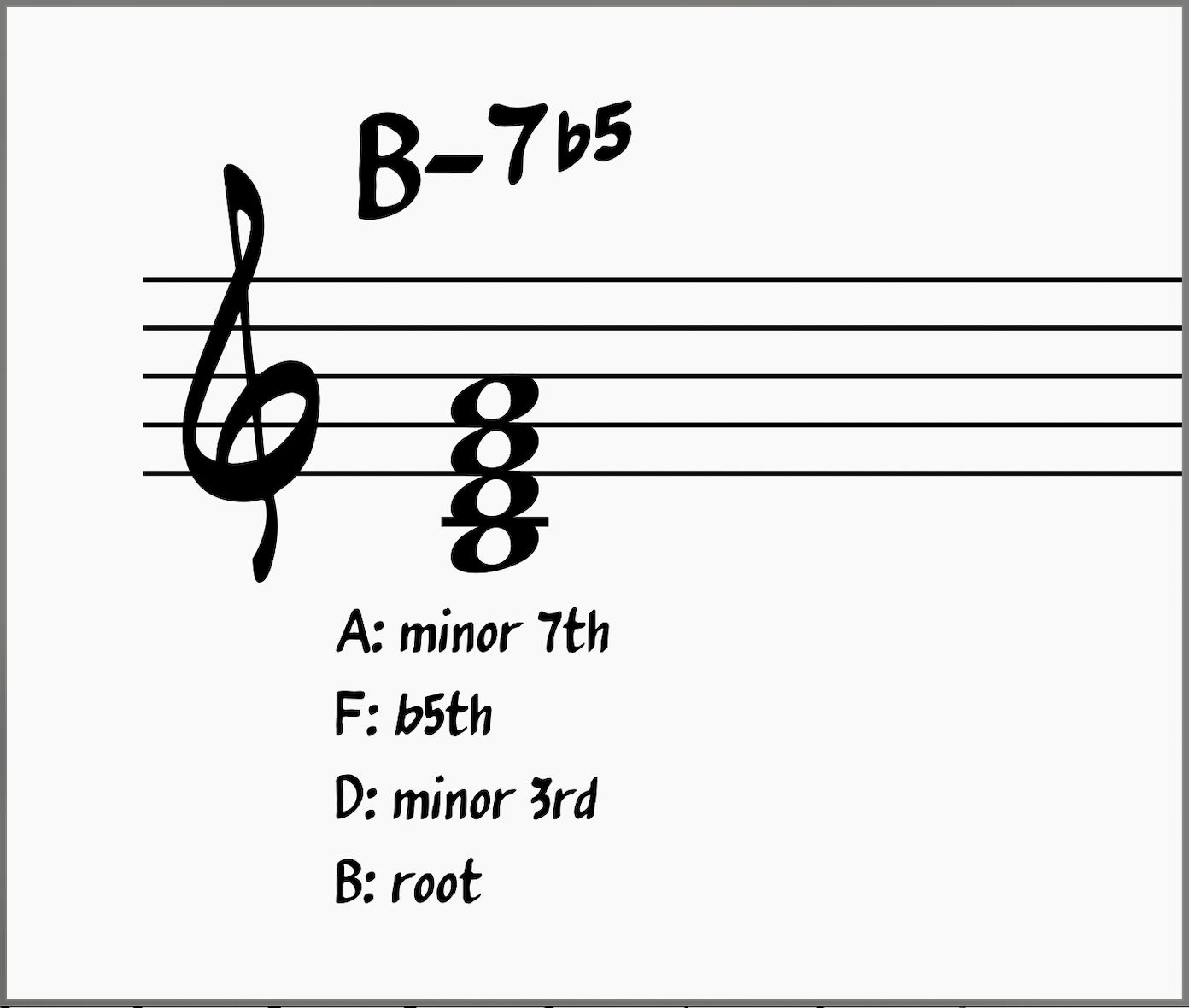
The Locrian mode has a dissonant sound. Compared to the other diatonic modes, it is most similar to the Phrygian scale, a natural minor scale with a lowered second scale degree.
However, the Locrian scale has two scale degrees lowered: the second and the fifth. It’s the only modern diatonic mode to have two lowered scale degrees. Here is the Locrian mode broken down by musical interval:
- A: Minor Seventh (B to A)
- G: Minor Sixth (B to G)
- F: Diminished Fifth (Tritone or B to F)
- E: Perfect Fourth (B to E)
- D: Minor Third (B to D)
- C: Minor Second (B to C)
- B: Root Note (Unison)
For more on musical intervals, check out our article on musical intervals.
The Locrian Scale In All 12 Keys
We’ve briefly looked at the B Locrian scale, but let’s dig deeper and bring this mode into other keys.
B Locrian Mode (Seventh Mode of C Major)

B Locrian:
- B-C-D-E-F-G-A-B
Seventh Chord:
- B-7b5
E Locrian Mode (Seventh Mode of F Major)

E Locrian:
- E-F-G-A-Bb-C-D-E
Seventh Chord:
- E-7b5
A Locrian Mode (7th Mode of Bb Major)

A Locrian:
- A-Bb-C-D-Eb-F-G-A
Seventh Chord:
- A-7b5
D Locrian Mode (7th Mode of Eb Major Scale)

D Locrian:
- D-Eb-F-G-Ab-Bb-C-D
Seventh Chord:
- D-7b5
G Locrian Mode (7th Mode of Ab Major)

G Locrian:
- G-Ab-Bb-C-Db-Eb-F-G
Seventh Chord:
- G-7b5
BEFORE YOU CONTINUE...
If music theory has always seemed confusing to you and you wish someone would make it feel simple, our free guide will help you unlock jazz theory secrets.

C Locrian Mode (7th Mode of Db Major)

C Locrian:
- C-Db-Eb-F-Gb-Ab-Bb-C
Seventh Chord:
- C-7b5
F Locrian Mode (7th Mode of Gb Major)

F Locrian:
- F-Gb-Ab-Bb-Cb-Db-Eb-F
Seventh Chord:
- F-7b5
A# Locrian Mode (7th Mode of B Major)

A# Locrian:
- A#-B-C#-D#-E-F#-G#-A#
Seventh Chord:
- A#-7b5
D# Locrian Mode (7th Mode of E Major)

D# Locrian:
- D#-E-F#-G#-A-B-C#-D#
Seventh Chord:
- D#-7b5
G# Locrian Mode (7th Mode of A Major)

G# Locrian:
- G#-A-B-C#-D-E-F#-G#
Seventh Chord:
- G#-7b5
C# Locrian Mode (7th Mode of D Major)

C# Locrian:
- C#-D-E-F#-G-A-B-C#
Seventh Chord:
- C#-7b5
F# Locrian Mode (7th Mode of a G Major)

F# Locrian:
- F#-G-A-B-C-D-E-F#
Seventh Chord:
- F#-7b5
The Locrian Shape on Guitar
Here is a guitar fretboard diagram for the B Locrian scale:

This guitar scale shape is transposable. Move it up a half step, and you will play C Locrian. Move it back a half-step, and you will play A# Locrian. In other words, memorize this shape for the Locrian mode and you can play it in any key on guitar.
Locrian on Piano
On piano, each locrian scale looks different. Each Locrian scale has a different combination of white keys and black keys:
B Locrian on Piano:
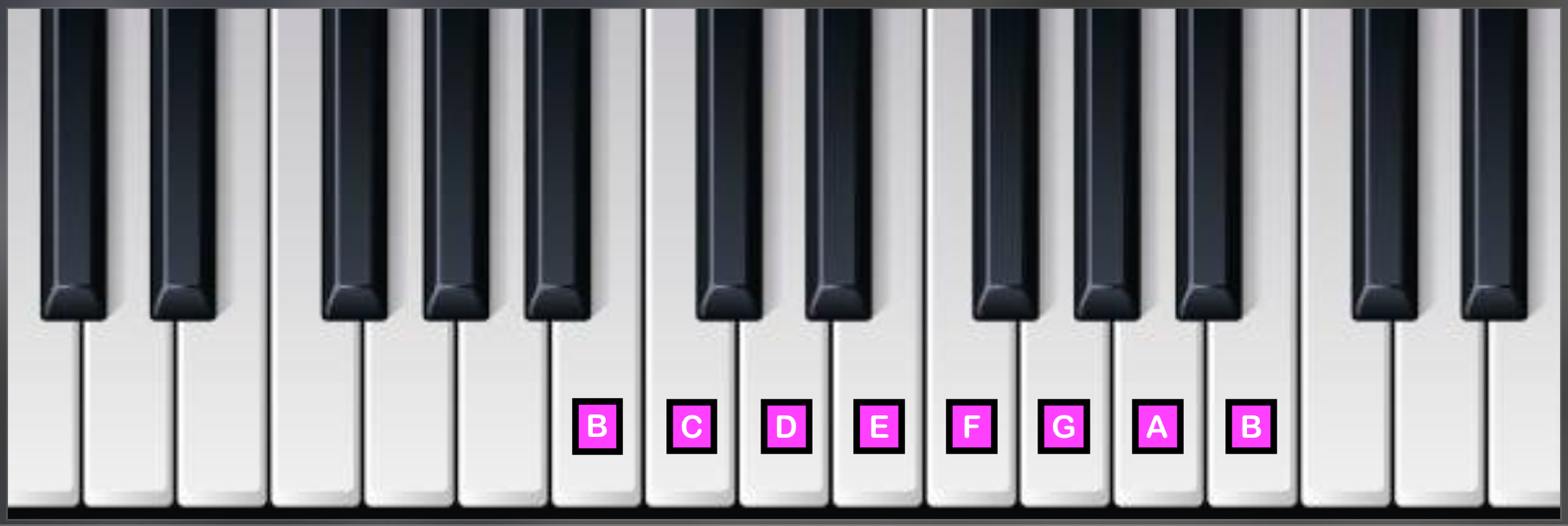
E Locrian on Piano:
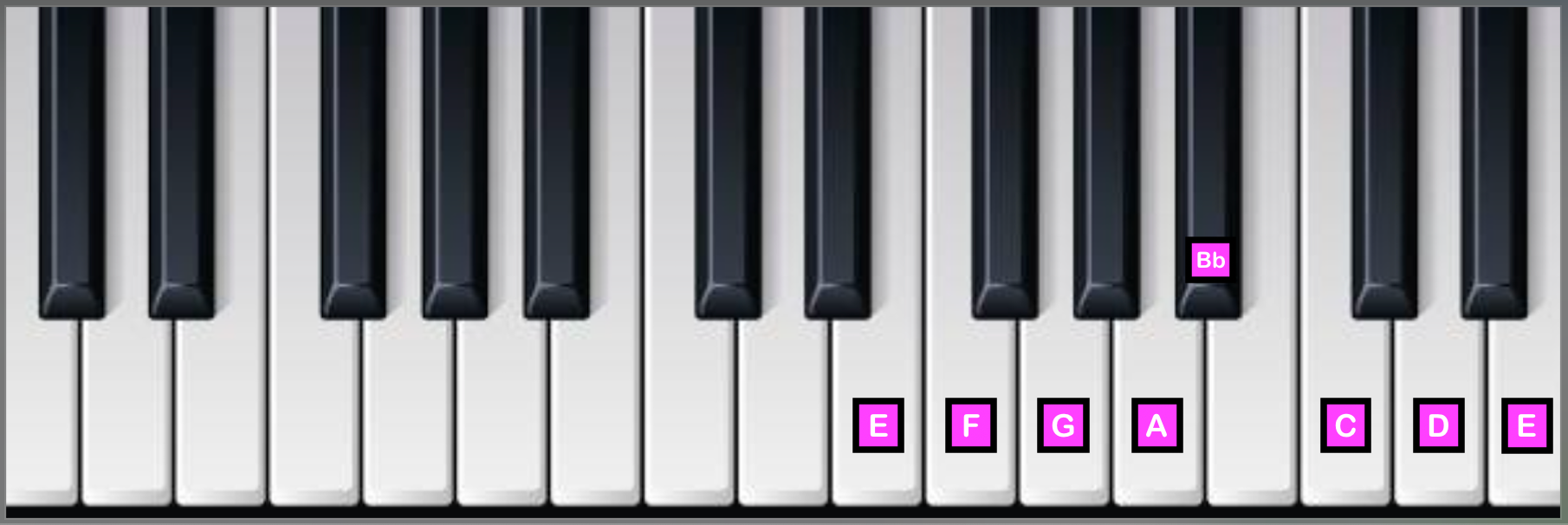
A Locrian on Piano:
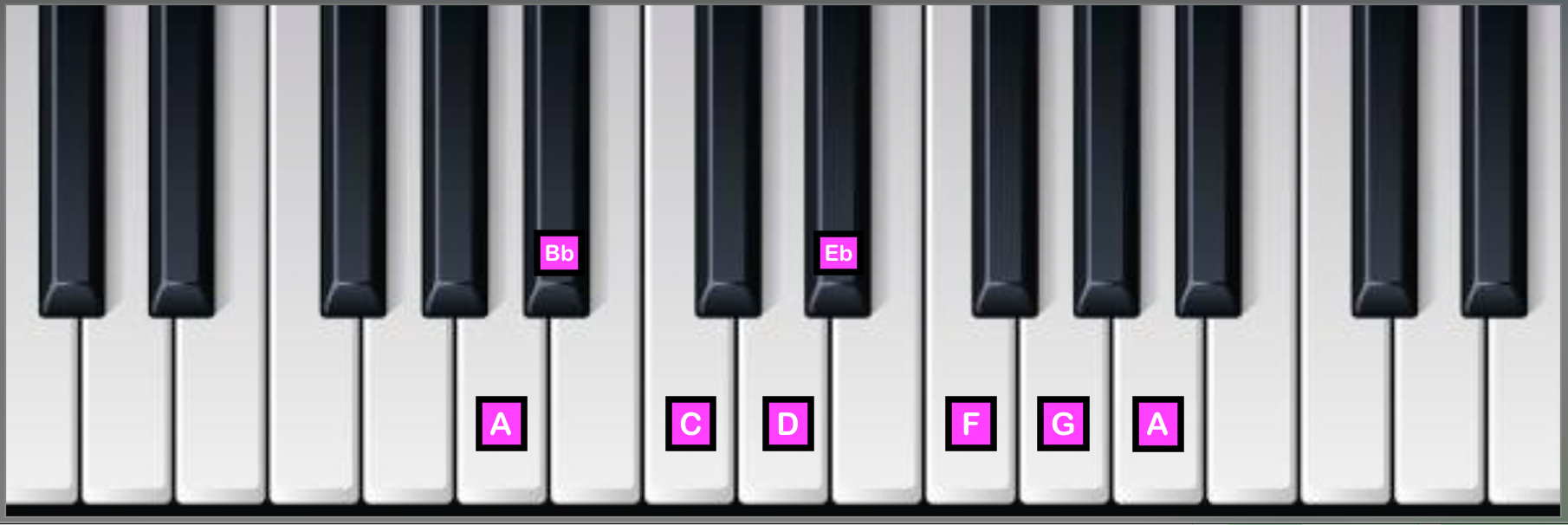
D Locrian Mode on Piano:
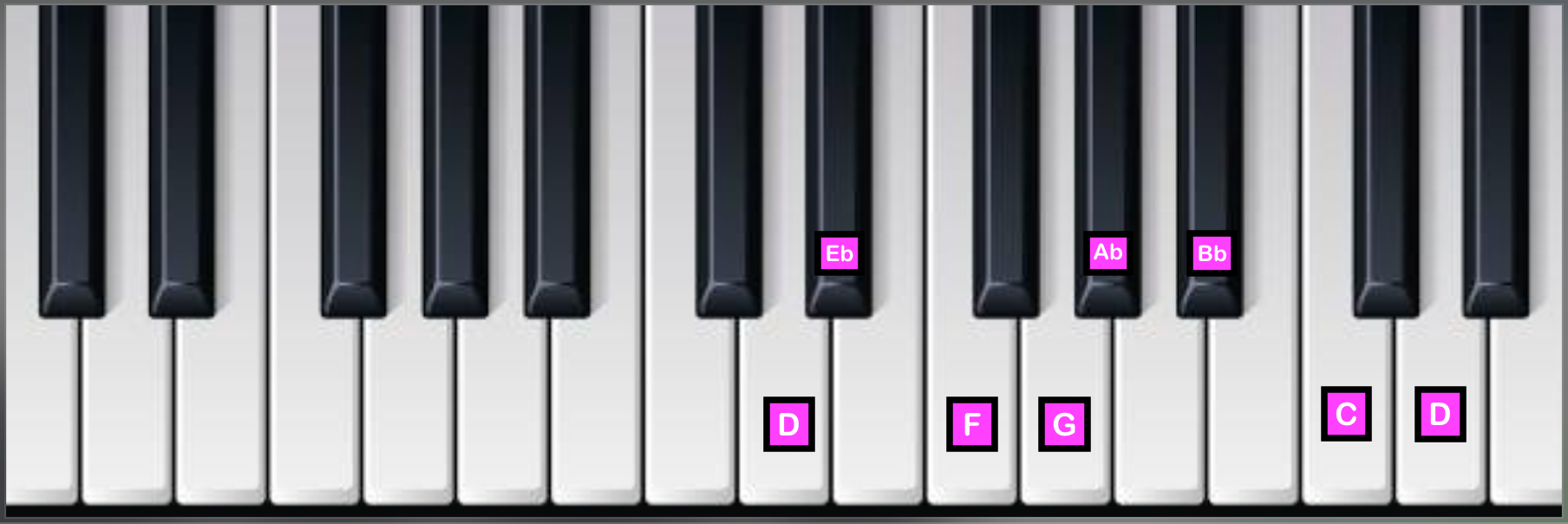
G Locrian Mode on Piano:
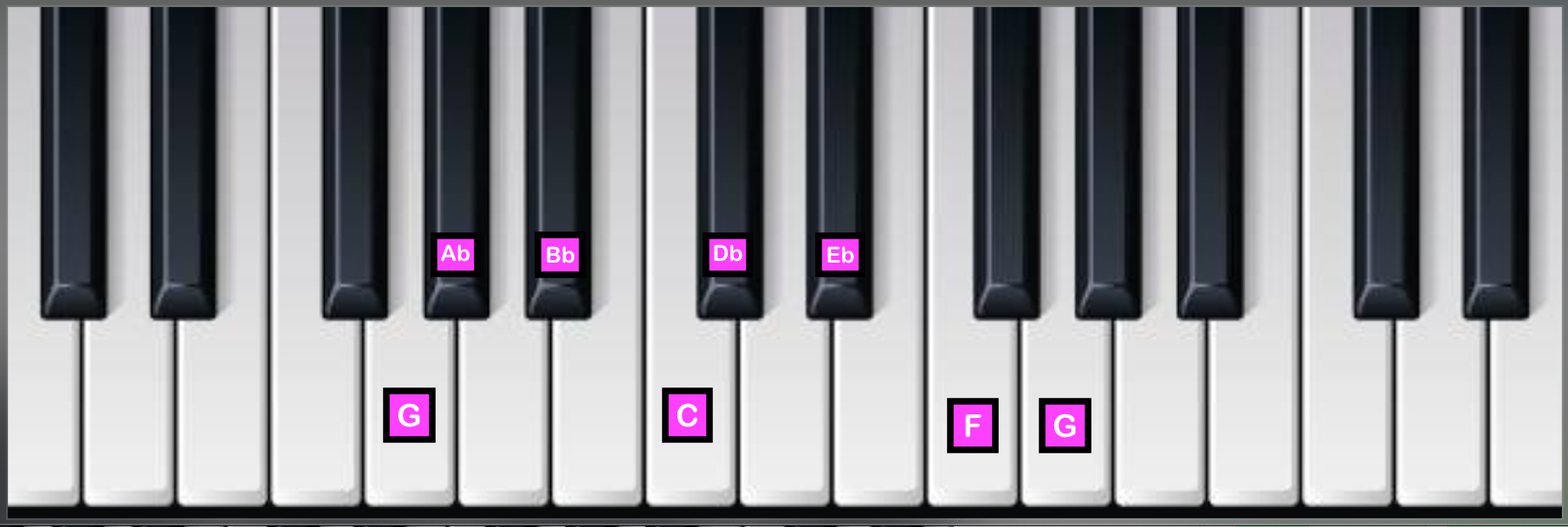
C Locrian on Piano:
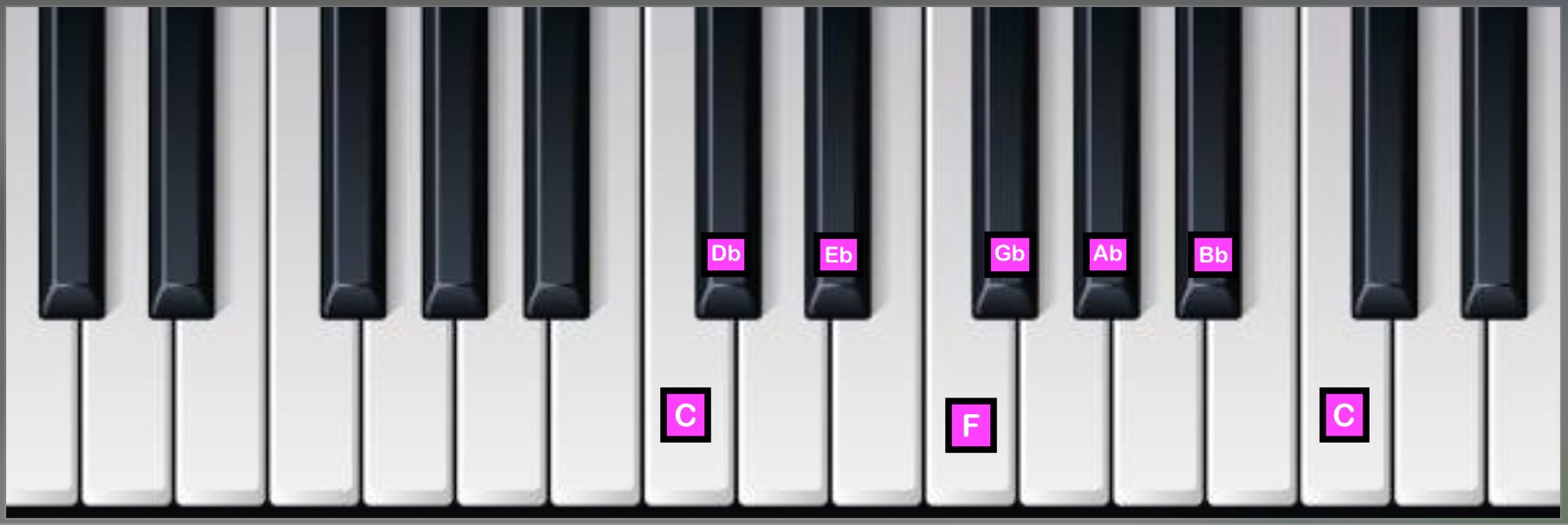
F Locrian on Piano:
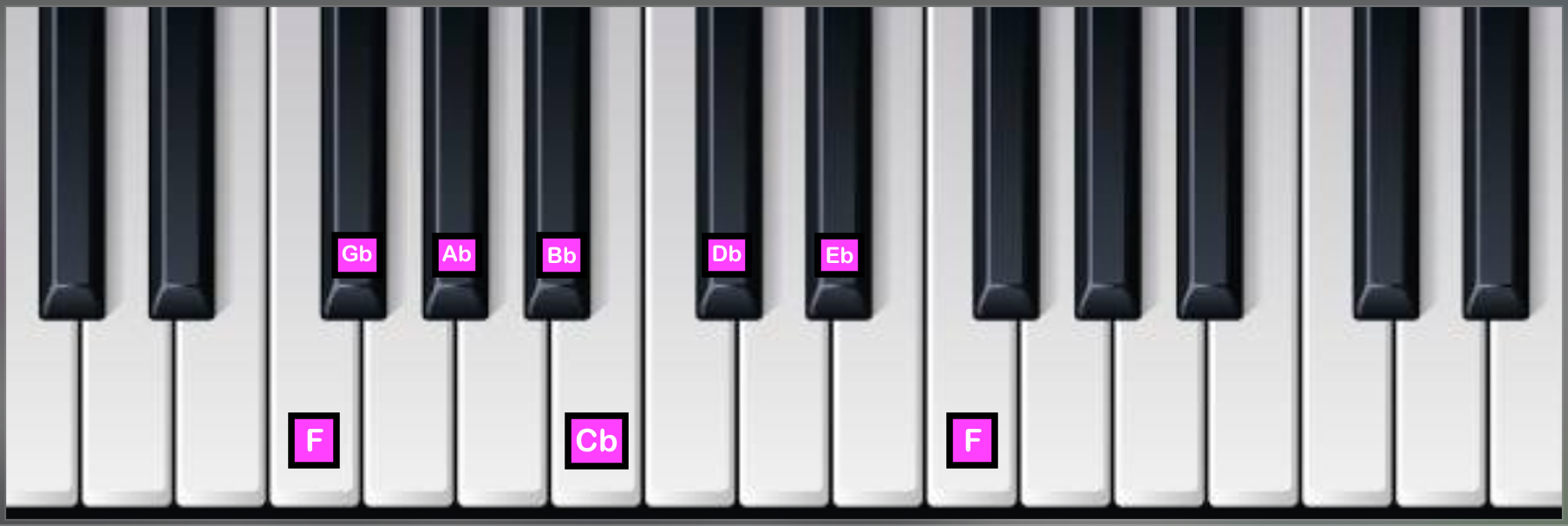
A# Locrian on Piano:
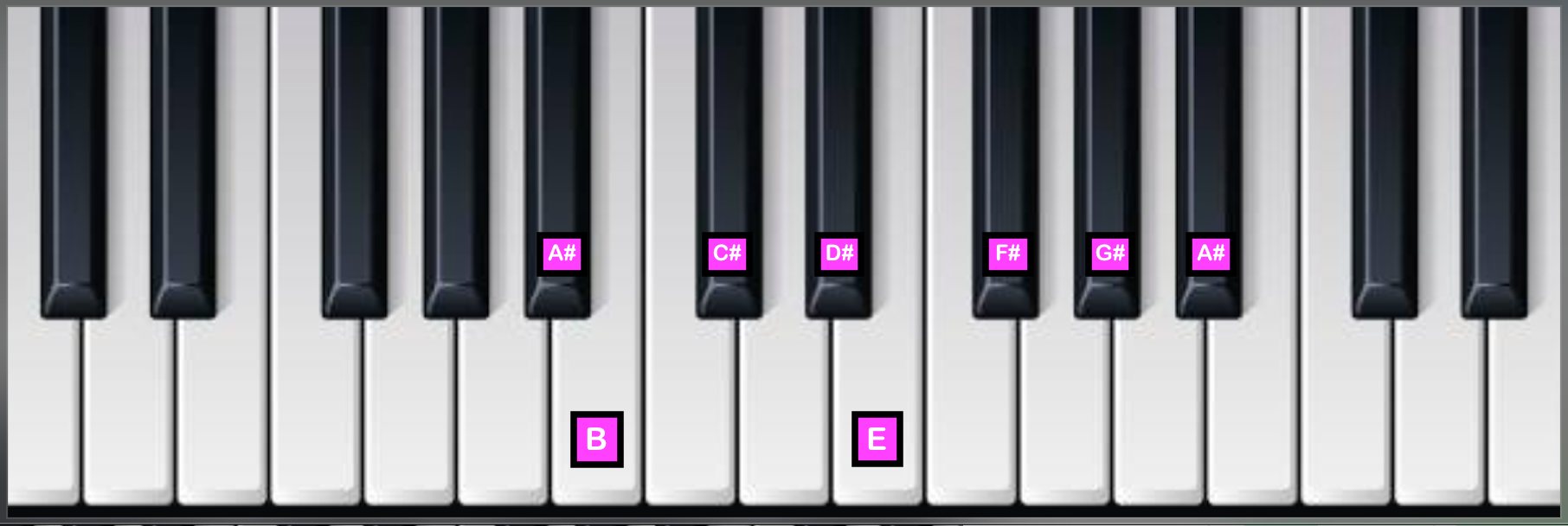
D# Locrian on Piano:
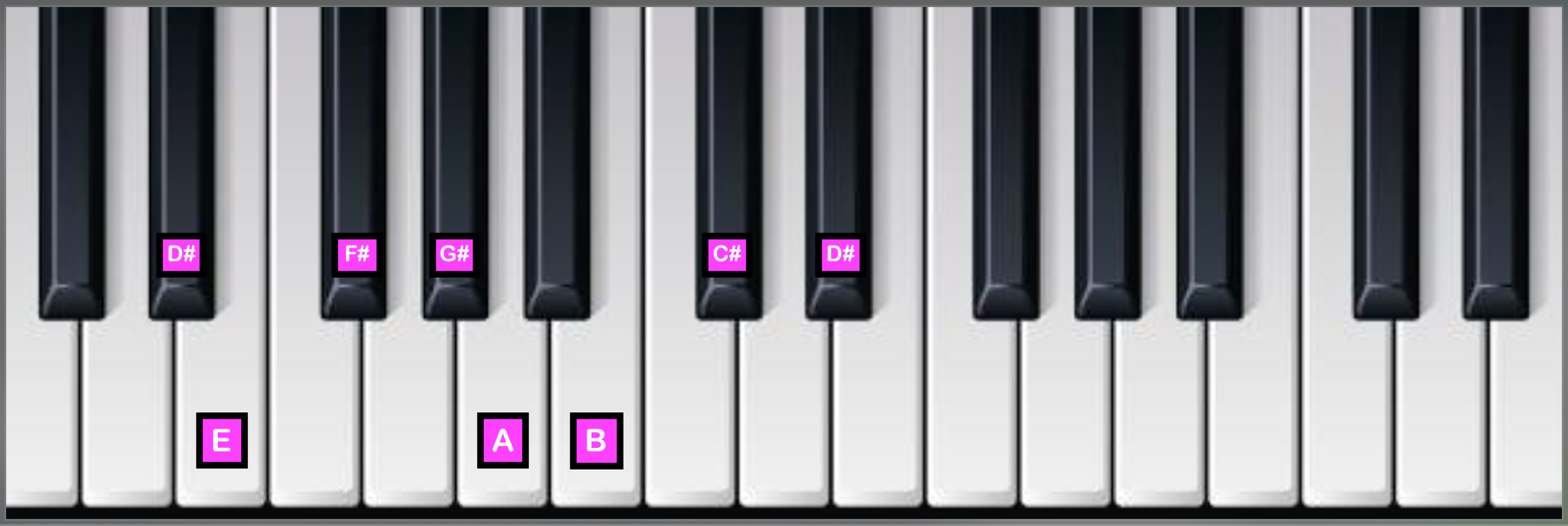
G# Locrian on Piano:
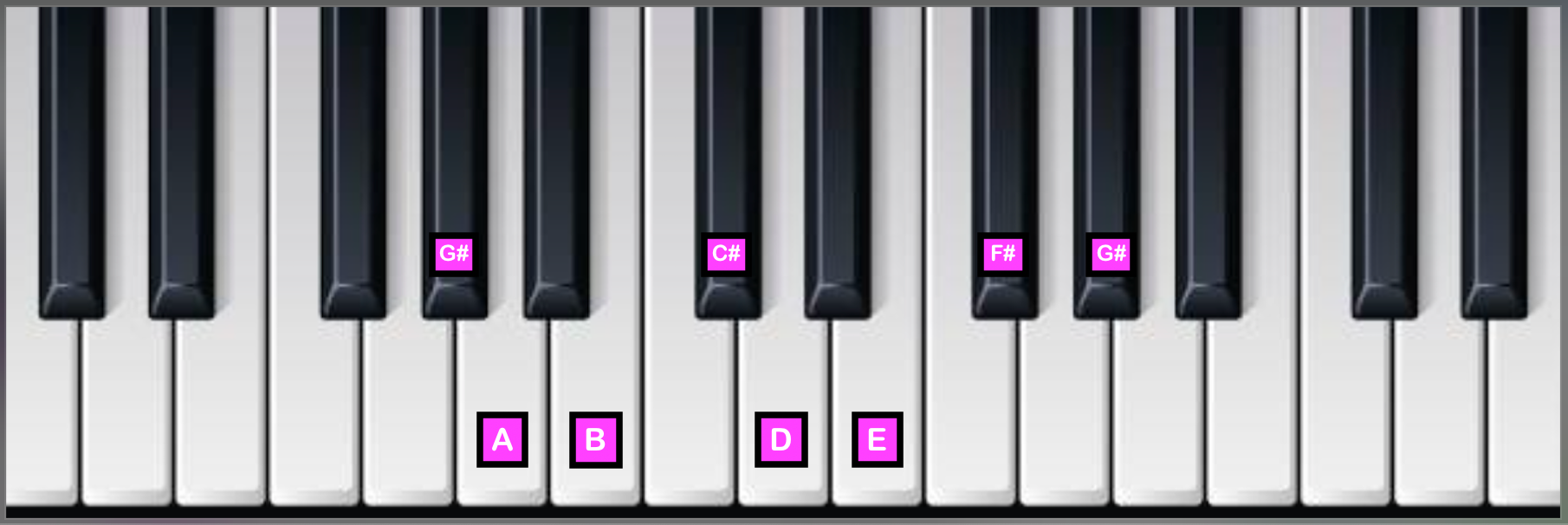
C# Locrian on Piano:
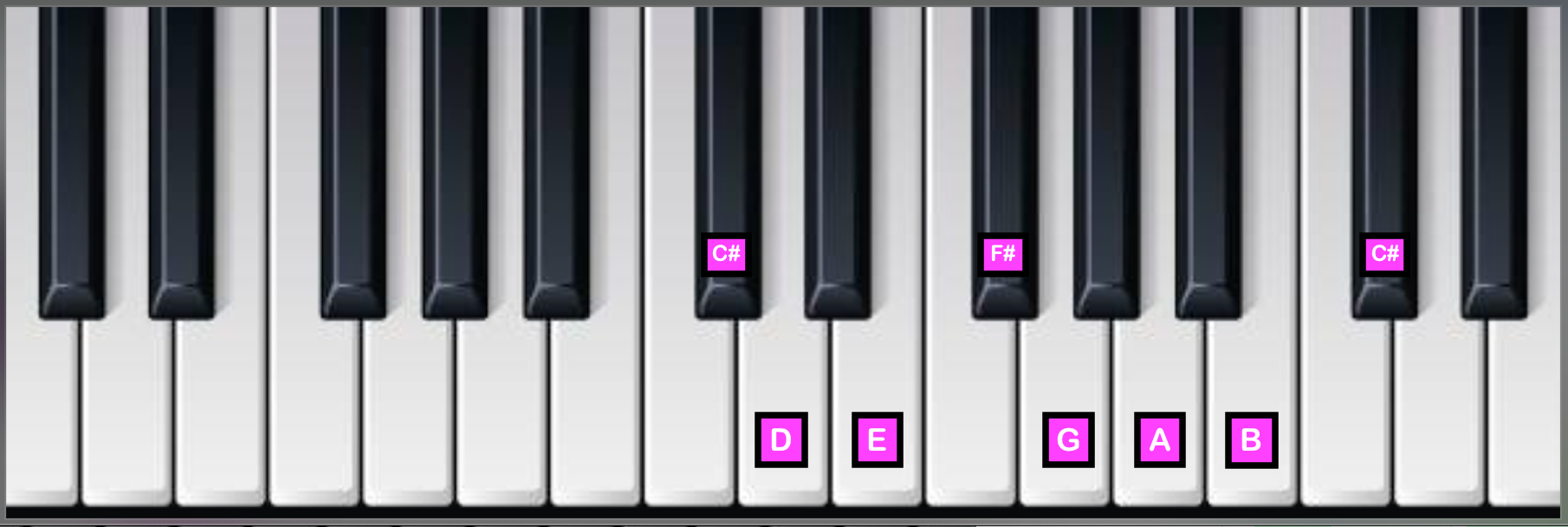
F# Locrian on Piano:

To Use The Locrian Scale In Improvisation
Want to make the most of the Locrian mode’s distinctive sound? As we’ve alluded, this scale works well over diatonic diminished and half-diminished chords (-7b5 chords). You commonly encounter half-diminished chords in the minor ii-V chord progression in jazz.
In minor ii-V chord progressions, the ii refers to the second chord in the minor diatonic series. This is a half-diminished chord!
Here is a minor ii-V progression in the key of A-. You can use B Locrian over the B-7b5 chord.

For more on jazz scales you can use when improvising, check out these 16 jazz scales you need to know!
Want To Master More Jazz Scales? Join The Learn Jazz Standards Inner Circle
The Learn Jazz Standards Inner Circle is designed to help players like you break bad habits, practice smarter, and take your playing to the next level.
If you’re ready for the next step in your musical journey, check out the Inner Circle.




